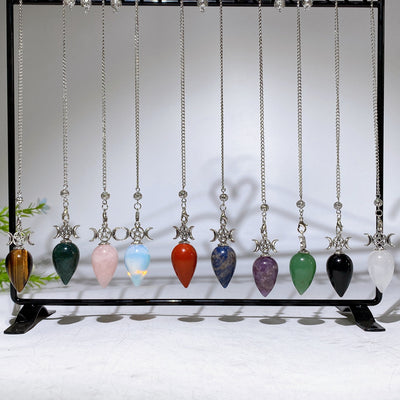Embarking on a journey of self-discovery can feel like navigating a vast, uncharted landscape. You might be seeking deeper self-understanding, emotional healing, and a more authentic way of living. If this resonates, you've likely encountered the concept of shadow work therapy, a transformative approach that has gained significant traction in modern wellness and psychotherapy. It's a path that invites you to look within, not just at the parts of yourself you readily accept, but also at the hidden aspects that hold immense potential for growth.
This guide will illuminate the role of shadow work in modern therapy, exploring how this powerful practice, rooted in Jungian psychology, helps individuals heal, integrate, and step into their most authentic selves. We'll uncover what shadow work truly is, its profound benefits, and how it's being woven into contemporary therapeutic practices to foster lasting change.
What is Shadow Work? Uncovering the Hidden Self
At its core, shadow work is the process of exploring your unconscious mind to uncover the parts of yourself that you have repressed or disowned. The term was coined by the renowned Swiss psychiatrist Carl Jung, who described the "shadow" as the unknown or dark side of the personality. It’s crucial to understand that the shadow isn't inherently evil or negative. Instead, it contains everything outside the light of consciousness, including suppressed emotions, instincts, and even untapped positive potential.
Imagine your personality as a house. There are the rooms you live in daily, well-lit and familiar—this is your conscious self, or persona. But there's also a basement or attic where you've stored things you don't want to look at: old fears, societal taboos, painful memories, or even creative talents you were taught to suppress. Shadow work is the courageous act of taking a lantern into these spaces, not to judge what you find, but to understand and integrate it. By doing so, you become a more whole, balanced, and self-aware individual.

The Evolution of Shadow Work into Modern Therapy
While Carl Jung laid the foundation, shadow work in psychotherapy has evolved significantly. Modern therapists integrate these concepts into various modalities to help clients achieve profound breakthroughs. A licensed therapist can provide a safe and structured environment to navigate the often-intense emotions that arise during this process. They act as a guide, helping you interpret the messages from your unconscious without becoming overwhelmed.
Therapeutic techniques used in shadow work often include:
- Dream Analysis: Dreams are a direct line to the unconscious, often revealing shadow aspects through symbolism and narratives.
- Talk Therapy: Guided conversations can help identify patterns of projection—where we attribute our own unowned traits to others.
- Mindfulness and Meditation: These practices help create the non-judgmental awareness needed to observe and accept shadow aspects as they arise.
- Creative Expression: Art, writing, or movement can give a voice to parts of the self that are difficult to articulate verbally.
By engaging in these practices with professional support, you can learn to embrace your whole self, leading to greater emotional freedom and authenticity. To get a better sense of how to begin this exploration, the video below offers a great introduction to the foundational concepts.
Key Benefits of Integrating Shadow Work in Therapy
Committing to shadow work therapy is an investment in your long-term well-being. The process of integrating your hidden self unlocks a multitude of benefits that can ripple through every area of your life. It moves beyond simple symptom management to address the root causes of psychological distress.
- Enhanced Self-Awareness: You gain a comprehensive understanding of your motivations, triggers, and behaviors, moving from unconscious reaction to conscious choice.
- Deeper Emotional Healing: By acknowledging and processing repressed emotions like grief, anger, or shame, you release their power over you and create space for healing.
- Improved Relationships: When you stop projecting your shadow onto others, you can see them more clearly and engage in more authentic, compassionate connections.
- Greater Authenticity and Confidence: Embracing all parts of yourself frees up enormous energy, allowing you to live a life that is truly aligned with your values and desires.
- Access to Hidden Talents: The shadow often holds dormant strengths and creativity. Integrating it can unlock new passions and potentials you never knew you had.
Practical Shadow Work Exercises You Can Explore
While working with a therapist is highly recommended, especially when dealing with deep-seated trauma, there are gentle exercises you can practice to begin your journey of self-exploration. These practices help build the muscle of self-reflection and create a foundation for deeper work. One of the most effective starting points is shadow work journaling.
Set aside quiet time to reflect on prompts like: "What qualities in others irritate me the most?" or "What did I want to be as a child that I was told was unrealistic?" The key is to write freely without censorship, allowing your unconscious thoughts to surface. This act of bringing feelings into the light is the first step toward integration. Pairing this practice with mindfulness tools can create a sacred space for reflection.

Creating a supportive environment is essential for this introspective work. Tools designed for reflection and energetic cleansing can help you feel grounded and safe as you explore sensitive emotional territory. A dedicated kit can provide the structure and focus needed to begin.
Tools to Support Your Shadow Work Therapy Journey
As you delve deeper into your shadow work, incorporating physical tools can enhance your practice by providing focal points for intention and emotional support. Crystals, for instance, are revered for their energetic properties that can help balance emotions and create a calming atmosphere. A stone like Rhodochrosite is particularly known for promoting emotional healing and self-love, which are cornerstones of shadow self integration. Similarly, aromatherapy bracelets can serve as a grounding anchor, using scent to bring you back to the present moment when difficult feelings arise.
These tools are not magic solutions but rather allies on your path. They serve as tangible reminders of your commitment to yourself and can help cultivate the mindful, compassionate state needed to do this profound work. Combining journaling, crystal energy, and aromatherapy creates a multi-sensory experience that deepens your connection to your inner world.

Enhance Your Practice with These Tools

Rhodochrosite Crystal Tower for Emotional Balance
$29.99
$39.99
Support emotional integration and heart-healing during shadow work therapy sessions with this elegant Rhodochrosite tower. Learn more ➔

7 Chakra Gemstone Aromatherapy Bracelet with Lava Stones
$49.99
$59.99
Wear this aromatherapy bracelet to ground yourself, enhance relaxation, and stay present during your shadow work therapy practice. Learn more ➔
Is Shadow Work Therapy Safe? Understanding the Risks
While the benefits are profound, it's essential to approach shadow work with awareness and care. The primary risk is becoming emotionally overwhelmed, especially if you have a history of significant trauma. Uncovering deeply buried pain without proper support can be re-traumatizing. This is why engaging with a qualified shadow work therapist is often the safest and most effective path.
A professional can help you pace the work, provide grounding techniques, and ensure you have the resources to process what comes up. According to the American Psychological Association, trauma-informed care is critical when dealing with past wounds. If you choose to explore on your own, start slowly, practice self-compassion, and be willing to seek professional help if the material feels too intense. Remember, the goal is integration, not suffering.
Conclusion: Embrace Your Whole Self
Shadow work therapy offers a powerful and compassionate path toward wholeness in a world that often encourages us to present only our "best" selves. By bravely exploring the hidden corners of your psyche, you reclaim lost parts of your soul, heal old wounds, and unlock a more authentic and vibrant way of being. It is a cornerstone of modern psychotherapy for those seeking not just to cope, but to truly thrive.
Whether you begin with journaling, seek the guidance of a therapist, or use supportive tools to create a sacred practice, your journey into the shadow is a profound act of self-love. It's an invitation to stop running from yourself and instead, turn around and embrace everything you are. Start your journey today and discover the incredible strength and wisdom waiting within you.
Frequently Asked Questions about Shadow Work Therapy
Shadow work therapy is a psychotherapeutic approach based on the ideas of Carl Jung. It involves exploring the unconscious parts of your personality—the "shadow self"—which includes repressed emotions, instincts, and hidden potentials. The goal is to bring these hidden aspects into consciousness to achieve greater self-awareness, emotional healing, and personal integration.
You can practice shadow work through various methods. Journaling with specific prompts is a great start. Other practices include meditation, dream analysis, creative expression like art or writing, and mindfulness. For deeper issues, it is highly recommended to work with a licensed therapist who specializes in Jungian or depth psychology to guide you safely through the process.
An example of shadow work is exploring a strong negative reaction you have to a particular trait in someone else. For instance, if you feel intense irritation towards people you perceive as "arrogant," shadow work would involve journaling about why this trait triggers you. You might uncover a repressed fear of being seen as arrogant yourself, or perhaps a hidden desire to be more confident that you've suppressed. By understanding this connection, you can integrate that part of yourself and reduce the emotional charge.
The main risk of shadow work is emotional overwhelm. Confronting repressed memories, traumas, or intense emotions without adequate support can be destabilizing or even re-traumatizing. It can also lead to misinterpreting insights, which might cause confusion or self-criticism. To mitigate these risks, it's important to practice self-compassion, go at a slow pace, and seek guidance from a qualified therapist, especially when dealing with a history of trauma.
EMDR (Eye Movement Desensitization and Reprocessing) is a specific therapeutic technique primarily used to treat trauma by helping the brain reprocess distressing memories. Shadow work is a broader psychological concept and practice focused on integrating all unconscious parts of the personality, not just trauma. While both can lead to healing, EMDR is a structured modality for specific issues, whereas shadow work is a more holistic and ongoing process of self-discovery and integration.











